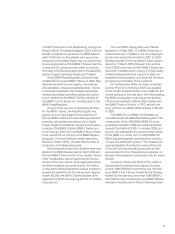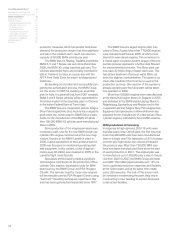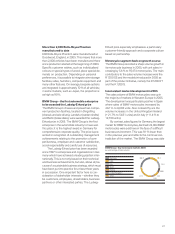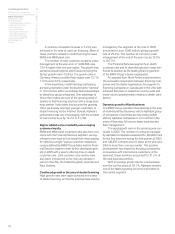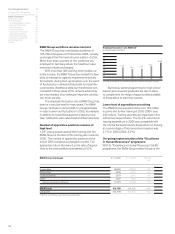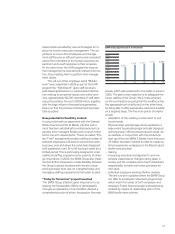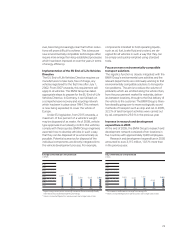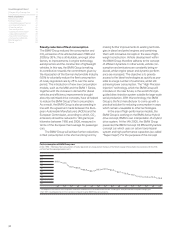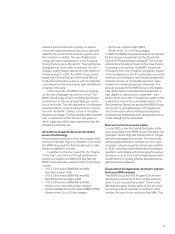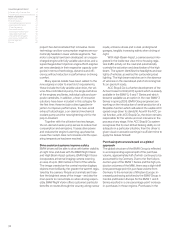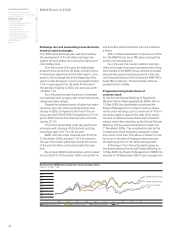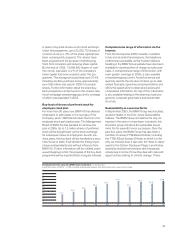BMW 2005 Annual Report Download - page 30
Download and view the complete annual report
Please find page 30 of the 2005 BMW annual report below. You can navigate through the pages in the report by either clicking on the pages listed below, or by using the keyword search tool below to find specific information within the annual report.
29
ever, becoming increasingly clear that further reduc-
tions will prove difficult to achieve. This is because
new environmentally compatible technologies often
require more energy than long-established processes
which have been improved on over the years in terms
of energy efficiency.
Implementation of the EU End-of-Life Vehicles
Directive
The EU End-of-Life Vehicles Directive requires car
manufacturers to take back, free of charge, any
vehicles registered for the first time after July 1,
2002. From 2007 onwards, this requirement will
apply to all vehicles. The BMW Group has taken
appropriate steps to prepare for the EU End-of-Life
Vehicles Directive. In Germany, it can fall back on
a comprehensive recovery and recycling network
which has been in place since 1994.This network
is now being expanded to cover the whole of
Europe.
Under EU legislation, from 2015 onwards, a
maximum of five percent of a vehicle’s weight
may be disposed of as waste. As of 2008, vehicle
type approvals must already confirm that vehicles
comply with these quotas. BMW Group engineers
ascertain how to develop vehicles in such a way
that they can be disposed of as economically as
possible. Potential scenarios for disposal of the
individual components are directly integrated into
the vehicle development process. For example,
components intended to hold operating liquids,
such as oil, fuel, brake fluid and coolant, are de-
signed for all vehicles in such a way that they can
be simply and quickly emptied using standard
tools.
Focus on more environmentally-compatible
transport solutions
The logistics function is closely integrated with the
BMW Group’s environmental care activities and the
relevant departments are continually working to find
environmentally compatible solutions to transporta-
tion problems. The aim is to reduce the volume of
pollutants which are emitted along the whole chain,
from the procurement market for materials, deliver-
ies between locations, through to the final delivery of
the vehicle to the customer.The BMW Group is there-
fore
steadily going over to more ecologically sound
methods of transport such as ship and rail. In 2005,
32.2% of land transport activities were carried out
by rail, compared to 29.3% in the previous year.
Increase in research and development
expenditure in 2005
At the end of 2005, the BMW Group’s research and
development network consisted of ten locations in
five countries with approximately 9,400 employees.
Research and development expenditure in 2005
amounted to euro 3,115 million, 10.5% more than
in the previous year.
Energy consumed per unit produced
in MWh
4.25
4.00
3.75
3.50
3.25
3.00
2.75
2.50
*Higher energy intensity due to continuing conversion to environmentally friendly
water-based and powder-based painting technology.
** Variance to reported figures from previous years due to larger basis of data
*The increase is attributable to a change in the energy mix.
** Variance to reported figures from previous years due to larger basis of data
01
3.08
02*/**
3.21
03**
2.94
04**
2.94
05
2.94
CO2emissions per unit produced
in tons
1.25
1.20
1.15
1.10
1.05
1.00
0.95
0.90
01
0.99
02**
0.98
03**
1.00
04**
0.94
05*
0.99


